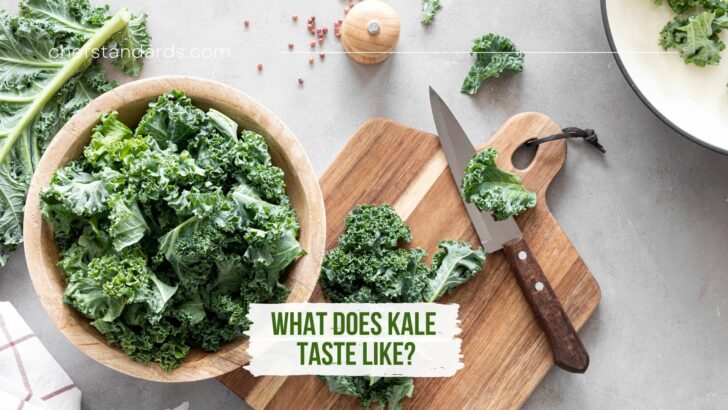Say hi to one of the healthiest leafy green vegetables also known as “the queen of greens”! This cruciferous veggie belongs to the Brassica oleracea family which is also home to broccoli, cabbage, and cauliflower.
Kale is a superfood rich in vitamin C, antioxidants, beta-carotene, and vitamin K. Even though I used to hate eating it as a child, now I cannot imagine starting my day without adding some kale to my smoothies.
I’ll just say that kale has one of the most distinctive tastes that you can either love or hate, but you can’t ignore it. Also, there are different ways of preparing kale that can alter its flavor and make it more tender, which can help you fall in love with this leafy green veggie.
We’ll cover all of that (and more) below!
What Does Kale Taste Like?
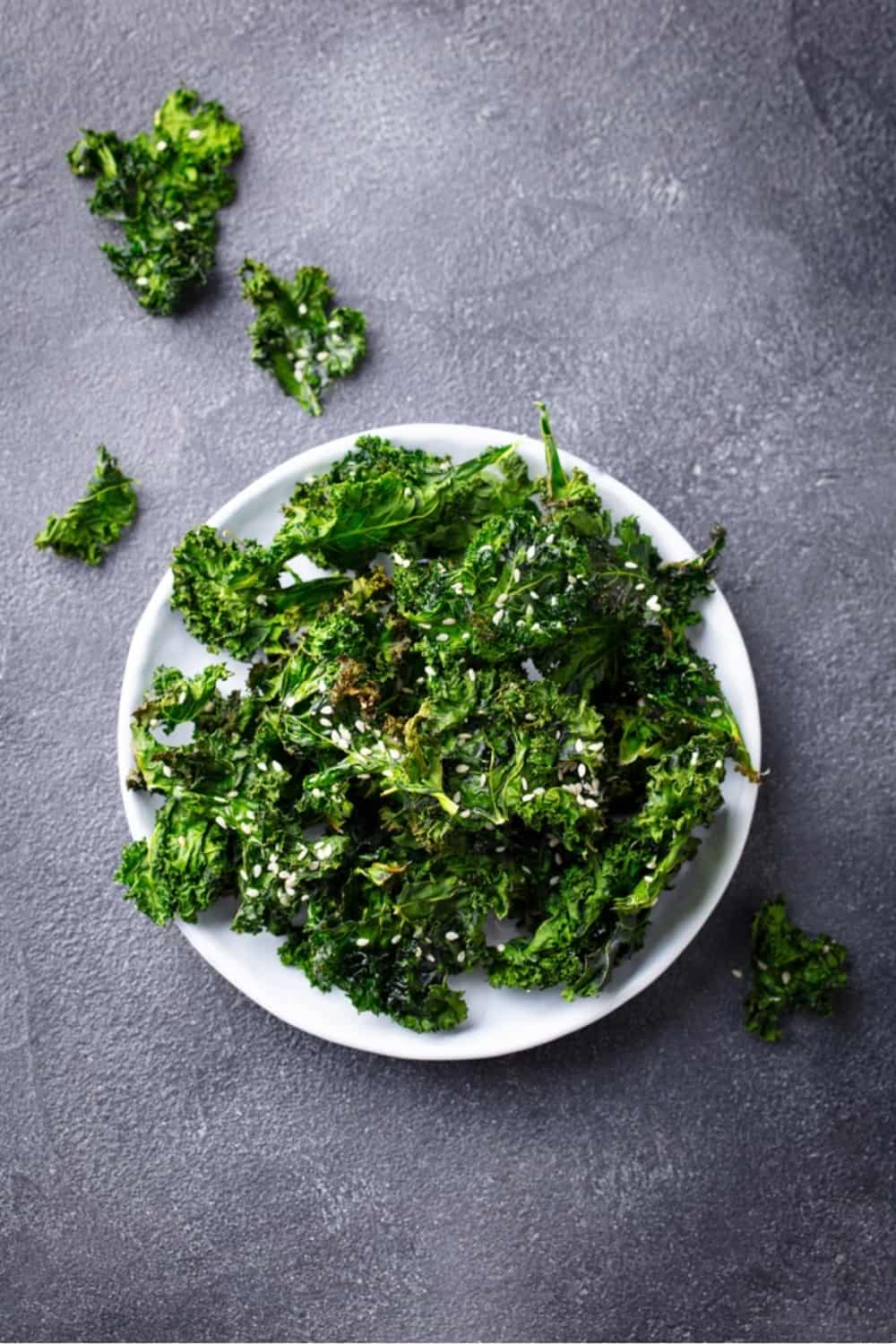
I remember when I was a child and whenever my mother served me some kale, I would make that I’ll-never-eat-this-again face. Right then I realized that kale has a strong, bitter, and earthy taste.
However, through time I got used to its distinctive taste and now I combine kale with as many veggies and fruits as possible. Also, I learned that there’s a huge difference in taste between younger and mature kale leaves.
Younger kale leaves have softer and thinner leaves with a mild taste, whereas mature kale leaves have tougher leaves and a stronger taste.
Younger kale leaves are more appropriate for salads because of their mild taste. You can also balance the bitter taste of mature kale leaves by adding some sweetness, acidic flavors, salt, or spice (more on that below).
I also have to warn you not to confuse kale for seaweed (since they can look so much alike) because the taste of seaweed is something very different.
Here comes the fun part. There are other varieties of kale with different tastes, so you should definitely try them all to find your favorite!
What Do Different Types Of Kale Taste Like?
From bitter to sweet, here’s what different types of kale taste like:
• Curly kale: This type of kale is one of the most bitter ones. If my mom served it to me during my childhood, I’d probably never even eat kale (or write about it). Joking aside, curly kale doesn’t taste that bitter when cooked, so this is a recommended cooking method for this kale variety.
• Tuscan kale: Also known as Dinosaur kale, this kale variety has a less bitter taste than curly kale or other types of kale. It has a nutty and earthy flavor, so if you’re trying kale for the first time you cannot go wrong with Tuscan kale. In other words, you will not become a kale hater like some of my friends. 😎
• Red Russian kale: If you’re looking for one of the sweetest types of kale, Red Russian belongs to that category. The easiest way to recognize this kale variety is by its purple stems. When I cooked Red Russian kale for the first time, I didn’t know that it turns dark when cooked. Well, the more you know!
• Siberian kale: This type of kale has a mild taste similar to cabbage. Whenever I’m looking for cabbage substitutes, I use Siberian kale. When I’m not using it as a substitute, I use it in salads because of its mild taste.
• Lacinato kale: This kale variety has a slightly sweet, nutty flavor and it’s not as bitter as curly kale. Truth be told, “not so many types of kale can boast with the bitterness of curly kale”. Therefore, Lacinato kale is best eaten raw and it also tastes delicious when cooked.
How To Get The Bitterness Out Of Kale

Seldom things can annoy me like the bitterness of the kale. It’s true that some kale types have a strong, bitter taste by default, but the good thing is that you can actually reduce kale’s bitterness by using these methods:
• Rinse twice: I’m sure every single one of us never forgets to rinse kale before chopping it, but not so many of us rinse it again after prepping it. That’s exactly what you should do if you want to reduce its bitterness. I will not even try to explain this “scientific phenomenon”, but I’ll just say that it has something to do with ‘removing some of the isothiocyanates’ which are responsible for its bitter taste.
• Massage kale: Swallow your pride and rub kale with your hands for approximately 10 minutes until it starts looking darker and wilted. The rubbing technique helps release the bitterness of this leafy green vegetable, and it’s of the best ways of prepping kale for salads. Pro tip: You can also add some olive oil, salt, and lemon juice to kale before rubbing it.
• Cut the stem of the kale and marinate it: Cutting the stem of the kale can also reduce its bitterness. Also, consider marinating kale with olive oil and salt, and leave it in the fridge for 24 hours.
It certainly won’t give you the same results as when you soak the chicken in milk, but the bitterness will reduce to some extent.
• Boil it: If you want to get the bitterness out of kale, then boiling it is the right cooking method that will help you achieve this. Don’t forget to add some salt, pepper, oregano, or garlic to it.
• Add some spices or sweet flavors: Dried fruit, olive oil, garlic, vinegar, curry powder, red pepper flakes, and salt can significantly reduce the bitterness of kale, so consider using them in your recipes.
How To Make Kale More Tender
The tough and stringy leaves of kale are the number two thing on the list of things that annoy me most. Luckily, there are a few ways that can help you tenderize its hearty leaves:
• Massage it: Let’s just pretend that this technique is not as ridiculous as it seems. Then, when you’re ready, grab a few leaves of kale and rub them with your hands in the same way as if you’re trying to get the bitterness out of it.
• Soak it: If you’re not that into massaging kale, then consider using the soaking method. Soak stemmed and cut kale in hot water for approximately 10 minutes. This will accelerate the breaking down of cell walls and make kale more tender.
• Let it rest: After dressing kale leaves, place it in a fridge for around 20 minutes or overnight. The oil found in the dressing will wet kale leaves. As a result, your kale will have a mild flavor and tender leaves.
What Goes Well With Kale?
Kale is best combined with strong flavors such as lemon, garlic, mint, or sweet potato. If you ask me, kale should never be eaten without garlic or vinegar.
These two ingredients successfully combat the bitterness that comes with this cruciferous vegetable. Hence, here are my top 3 combos with kale:
1. Kale + garlic + olive oil + lemon
2. Kale + vinegar + apple or beetroot + walnuts
3. Kale + soy sauce + garlic
Not to forget, if you want to play it simple, know that kale is one of the best sides for sandwiches.
Of course, that’s not all! Below you’ll find what veggies, fruits, herbs, spices, and other ingredients go well with kale. I’m sure this will help you prepare the tastiest meals with this leafy green vegetable.
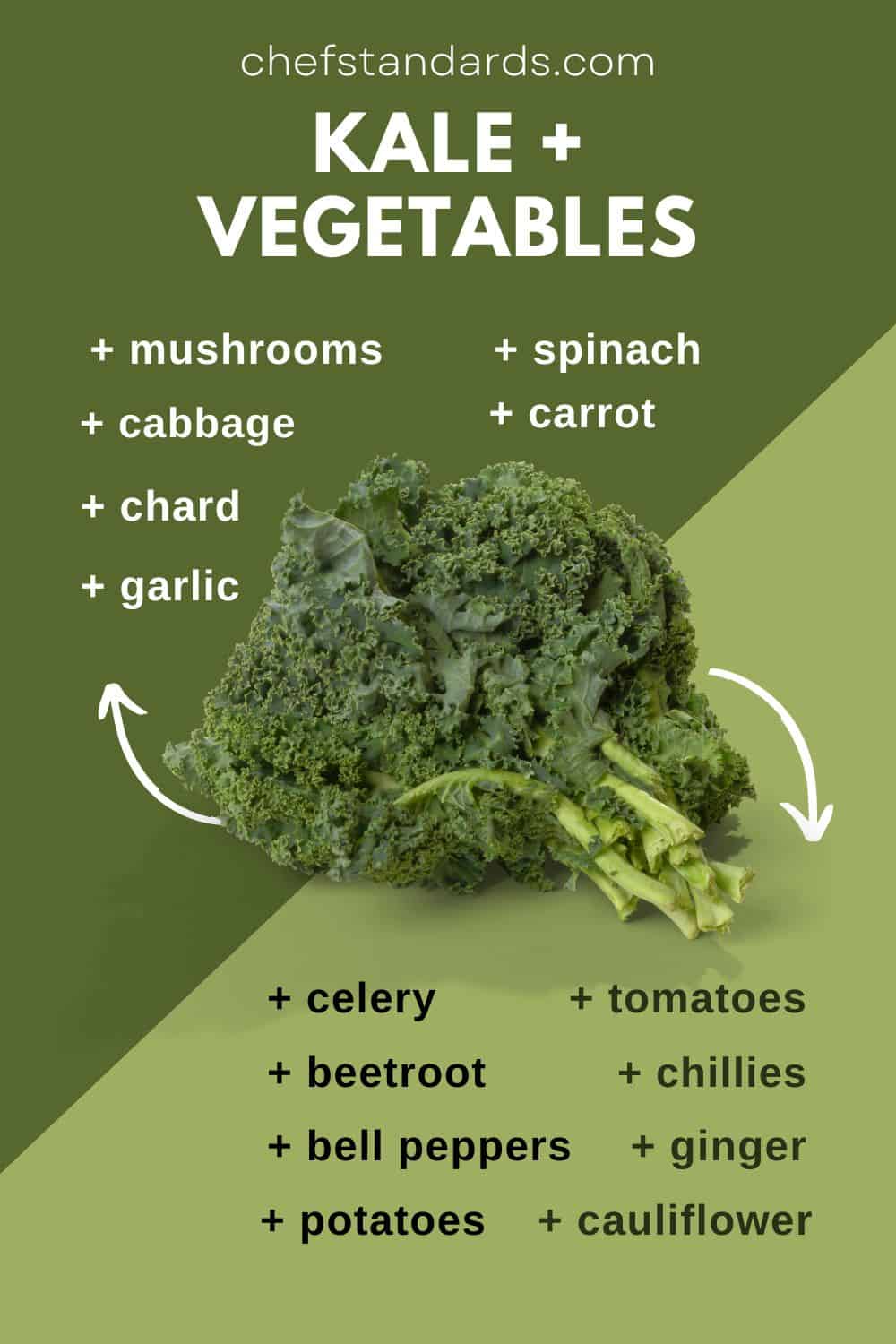
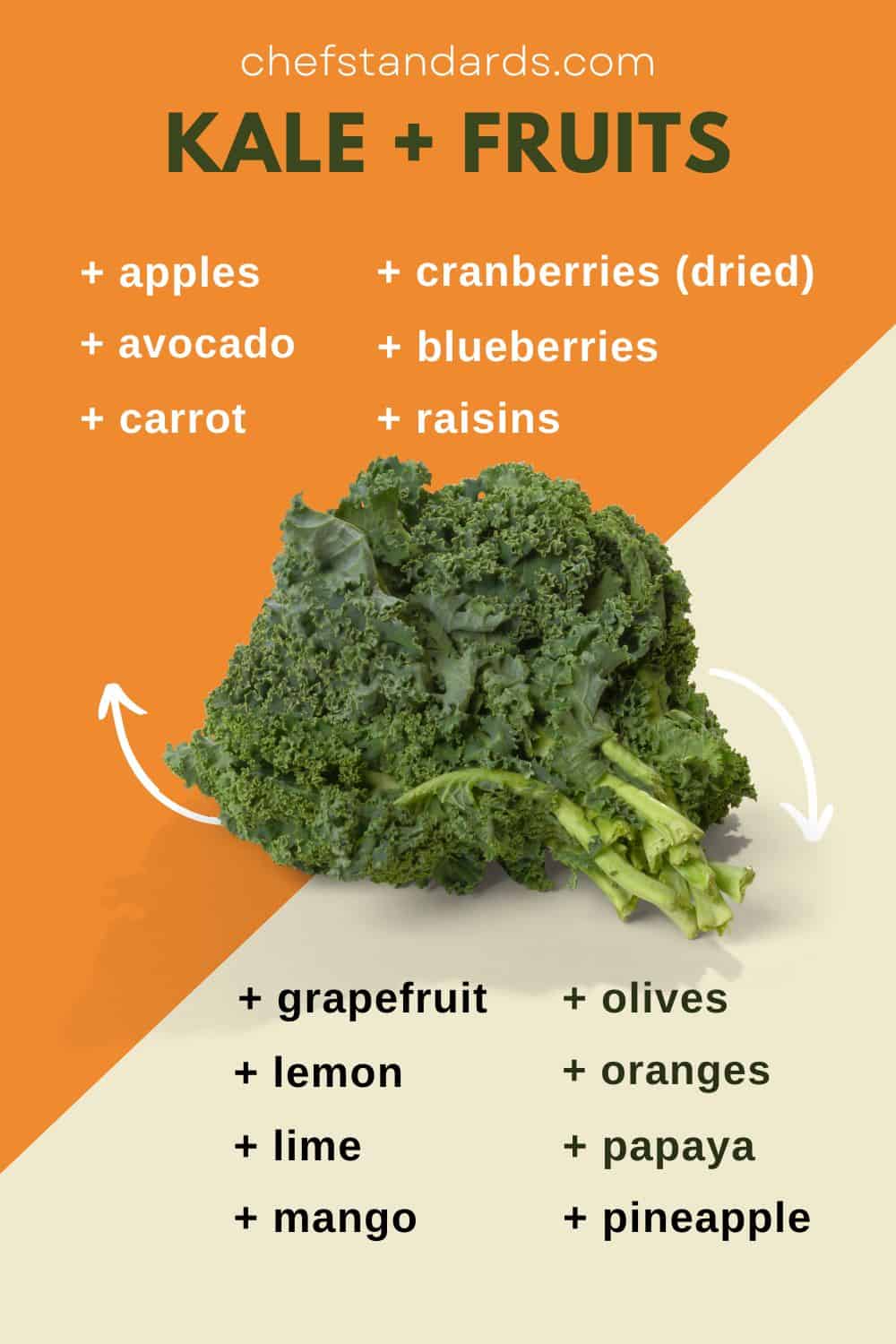
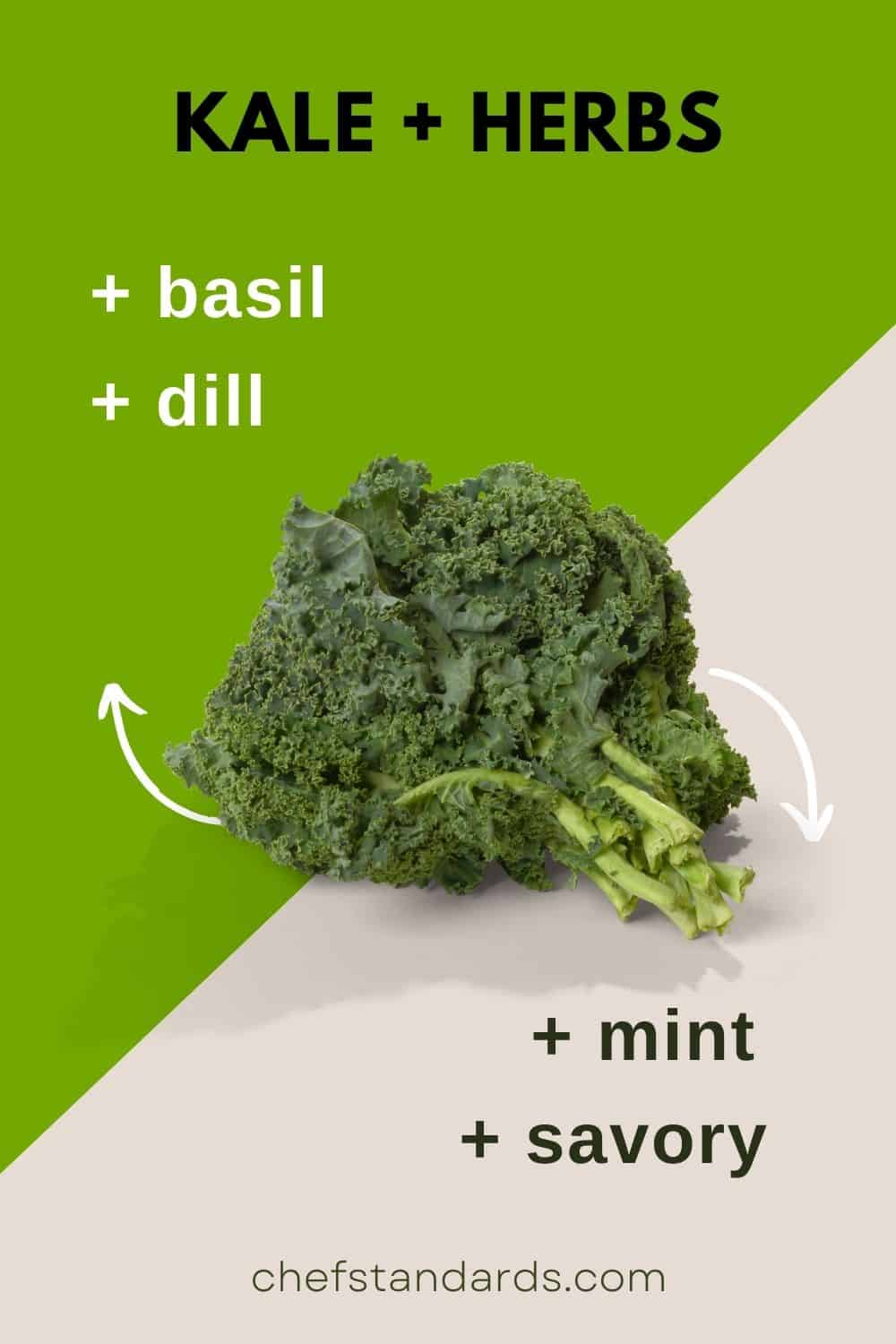


3 Tasty Ways To Prepare Kale
If you’re looking for ways to fall in love with this leafy green veggie, then you have to try out at least one of the following recipes:
1. Butter Beans With Kale, Lemon, Chilli, And Garlic

Butter Beans With Kale, Lemon, Chilli, And Garlic
Kale by itself is super healthy, but combining it with butter beans is mega healthy and delicious.
Ingredients
- 180g kale (leaves sliced, tough stalks removed)
- 2 garlic cloves (sliced)
- 400g can butter beans (drained and rinsed)
- ½ - 1 teaspoon chili flakes
- 1 lemon (zested and juiced)
- 3 tablespoons olive oil
- 1 teaspoon sea salt
Instructions
Step 1: Pour olive oil into a large saucepan and heat over low heat. Then add garlic, lemon zest, chili flakes, and sea salt and cook it for around 3 minutes. Add the butter beans and stir thoroughly. Cook for 5 to 8 minutes, and stir frequently.
Step 2: Remove the beans from the saucepan into a bowl and leave around 1 tablespoon of oil in the pan. Return the saucepan to medium heat, add the kale and 50 ml of boiling water. Cook for 8 to 10 minutes while stirring frequently.
Step 3: Mix the kale with beans in a bowl and squeeze some lemon juice over it. Serve the side dish warm.
2. Kale Smoothie

Kale Smoothie
A surefire way to spice up your smoothies and give yourself a dose of vitamin C is by adding some kale.
Ingredients
- 1 banana
- 2 handfuls kale
- 1 tablespoon cashew nuts
- 1 large handful frozen pineapple chunks
- 1 medium-sized chunk ginger
- ½ avocado
- ½ lime (juice only)
Instructions
Step 1: Mix all of the ingredients into a smoothie maker or a bullet, add some water, and blitz the mixture until it reaches the desired consistency. Also, add more water if needed.
3. Chicken, Kale, And Mushroom Pot Pie
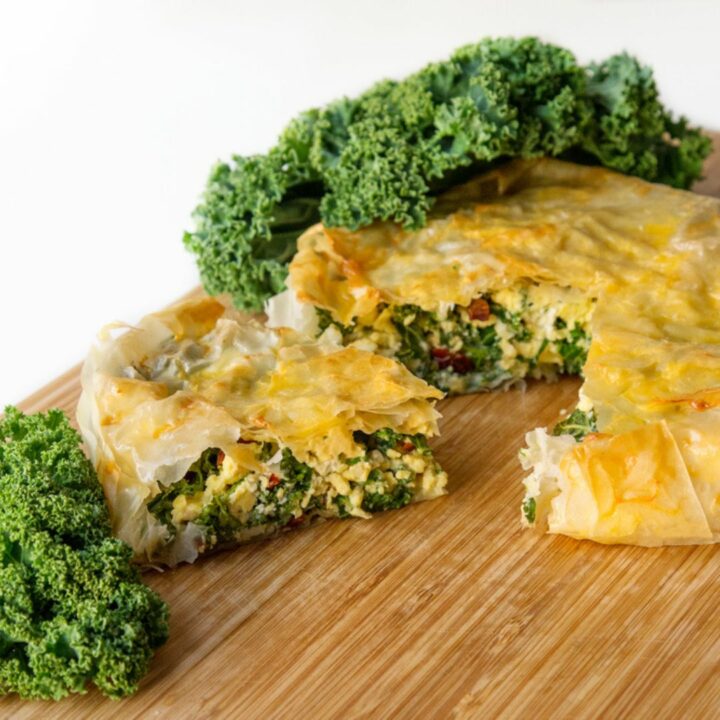
Chicken, Kale, And Mushroom Pot Pie
This recipe is a great option for a family supper. Also, you can always freeze the leftovers to save this delicious this for another day.
Ingredients
- 375g pack puff pastry
- 1 tablespoon olive oil
- 1 tablespoon wholegrain mustard
- 100g crème fraîche
- 350g chicken breasts (cut into small chunks)
- 1 large onion (chopped)
- 3 thyme sprigs (leaves picked)
- 1 egg yolk (to glaze)
- 2 garlic cloves (crushed)
- 250g chestnut mushrooms (sliced)
- 100g kale
- 300ml chicken stock
- 2 teaspoon cornflour mixed with 1 tablespoon cold water
Instructions
Step 1: Heat ½ tablespoon olive oil in a casserole dish over low heat. Then add the onion and continue cooking for around 5 minutes until it softens. Add thyme, garlic, and keep stirring for 1 minute. Turn up the heat. Add the chicken and fry it until it becomes golden in color. Add the remaining oil and the mushrooms. Heat the oven to 200°C.
Step 2: Add the crème fraîche, mustard, kale, stock, and season. Then add the cornflour mixed with water and stir until it reaches a thicker consistency.
Step 3: After removing it from the heat, cover it with the puff pastry lid. Make sure to press the sides of the casserole dish, so that it’s fully covered. Slice a cross in the center of the pastry and glaze it with the egg. Bake the dish for approximately 30 minutes until the pastry puffs up and becomes golden in color.
Eat More Kale!
I’m pretty sure one can never eat too much kale, so “eat more kale” is a reminder to myself and to you to add more kale to our diet.
If you have kids and you still haven’t introduced them to this leafy green veggie, then it’s high time you do so. Just make sure to offer them some milder kale varieties like Red Russian kale or Lacinato kale. They’ll be grateful to you as they grow older. 😊

